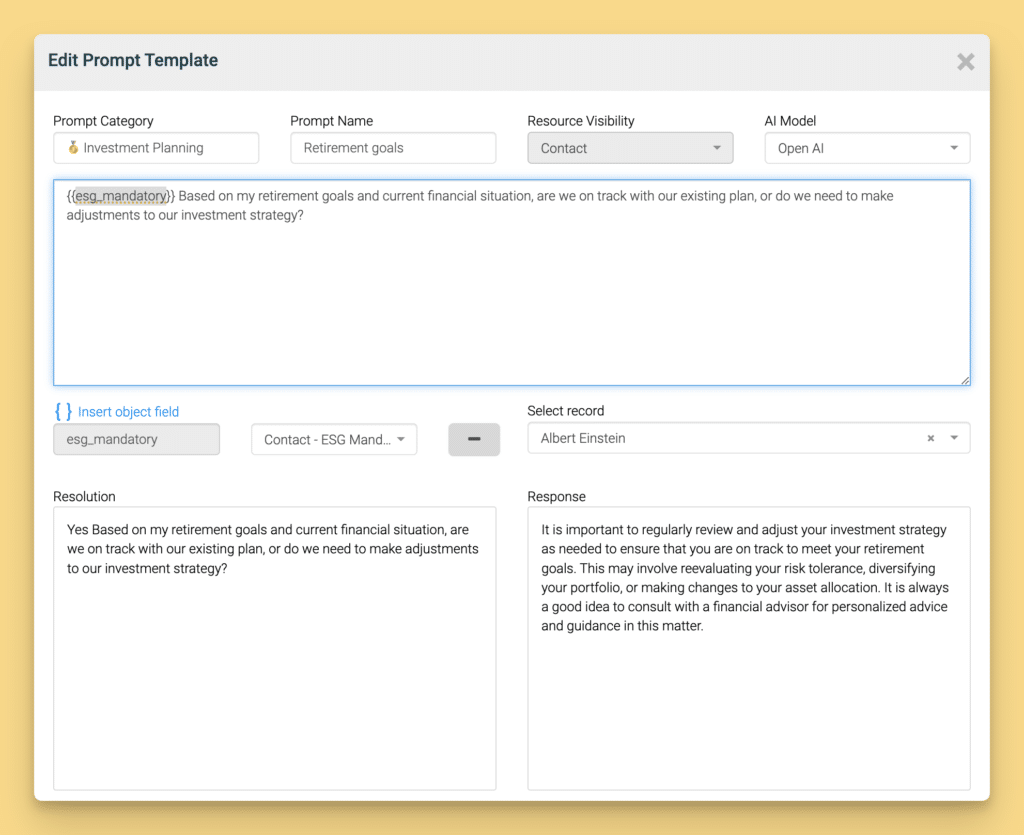Top Challenges of AI Adoption in Banking and How to Overcome Them

The challenges of AI adoption in banking face critical issues such as data governance, regulatory frameworks, integrating with legacy systems, managing regulatory compliance, ensuring data privacy, and addressing ethical concerns. These hurdles can significantly impact the successful deployment of AI technologies. This article delves into these challenges of AI adoption in banking and offers strategies to overcome them.
Key Takeaways
- Adopting AI in banking enhances customer experience, operational efficiency, fraud detection, and risk management but also requires tackling integration with legacy systems and regulatory compliance.
- Data privacy, security concerns, data quality, and algorithmic biases are significant challenges in AI adoption, requiring robust cryptographic techniques, inclusive data representation, comprehensive AI risk management frameworks, and adherence to regulatory compliance.
- Addressing the AI talent gap, high development costs, and ethical considerations are critical for successful AI implementation in banking, necessitating targeted training, partnerships, transparent reporting, and strategic use of open-source frameworks.
Understanding the Scope of AI in Banking

The banking industry has already begun to harness the immense potential of AI and machine learning, particularly in the realms of customer experience and operational efficiency. AI-driven chatbots, for instance, provide round-the-clock customer support, understanding customer behavior, and delivering personalized services. These chatbots streamline traditional banking operations by automating processes like KYC information recording and loan disbursement, ensuring customers receive timely support and services.
Not limited to customer service, AI technologies also play an instrumental role in fraud detection and risk management. AI-based fraud detection systems analyze vast amounts of transactional data to predict and identify suspicious activities, ensuring robust AI risk management. These systems automate critical decisions and refer complex cases to human analysts, providing a layered approach to fraud detection and financial stability. Moreover, AI aids in financial forecasting by analyzing market trends and large data volumes, enabling informed investment decisions and predictive analytics. By leveraging predictive analytics, banks can gain valuable customer insights, enhancing their ability to tailor services and products to meet customer needs.
Robotic process automation (RPA) significantly enhances operational efficiency in the banking industry by automating repetitive tasks, thus reducing costs and increasing productivity. By leveraging AI’s ability to identify patterns and correlations in data, banks can uncover new sales opportunities and improve operational metrics, making AI implementation a game-changer for the financial services sector.
Data Privacy and Security Concerns
Adopting AI also brings about substantial concerns regarding data privacy, data breaches, and the need for robust cybersecurity measures. The vast customer data processed by AI systems is vulnerable to malicious attacks, potentially disrupting banking operations and compromising sensitive information. Weak security measures can facilitate nefarious activities, such as money laundering and insider trading, posing severe risks to financial institutions.
Banks need to employ advanced cryptographic techniques such as blockchain to alleviate these risks. Blockchain technology enhances data security through decentralization and immutability, reducing the risks associated with centralized data storage breaches. The immutability feature ensures data integrity, preventing unauthorized alterations and protecting consumers’ financial data.
Moreover, the responsible and secure use of AI requires robust security safeguards and compliance with regulatory concerns. Banks must establish comprehensive compliance and risk controls to protect consumers and ensure the ethical handling of sensitive data.
Algorithmic Bias and Fairness in Financial Decision-Making

In the realm of financial decision-making, AI adoption faces the significant challenge of algorithmic bias. Ethical AI practices are crucial to ensure that AI models do not amplify societal biases present in historical training data, leading to unfair decision-making and discriminatory outcomes. For example, biased data can perpetuate discriminatory practices like unlawful redlining in insurance and mortgage lending, which undermines fair lending practices.
Financial institutions need to ensure inclusive data representation and use sophisticated ensemble models to tackle these issues. Simply removing protected characteristic fields from training data is not enough, as non-protected features can act as proxies for these characteristics, continuing the cycle of bias. Financial firms must design AI risk management principles that scrutinize data quality and algorithmic fairness to maintain financial stability and consumer trust.
The financial services industry must adopt robust AI risk management frameworks to mitigate these biases. By enabling financial institutions to develop highly customized financial strategies that account for diverse customer needs, AI can promote fairness and inclusivity in financial services.
AI Implementation Challenges with Legacy Systems

For many banks, integrating AI with legacy systems poses a formidable challenge. Legacy systems often lack the flexibility needed for AI solutions, making integration complex and challenging. This complexity requires careful planning, coordination, and significant expertise to ensure seamless operation between new AI tools and outdated infrastructure.
Before attempting integration, banks need to:
- Evaluate how compatible their legacy systems are with AI technologies
- Integrate intelligent systems and complex algorithms with labeled data, ensuring system interoperability and a solid technology stack
- Mitigate deployment delays and ensure scalability
- Design AI risk management strategies that align with existing operational frameworks
This approach helps in designing AI risk management strategies that align with existing operational frameworks.
Regulatory Compliance and Legal Challenges
The diverse regulatory frameworks that govern AI in banking present a significant navigation challenge. The EU AI Act, effective from Spring 2024, establishes a consumer protection-driven approach through a risk-based classification of AI technologies. This act requires financial institutions to comply with stringent regulations, particularly for high-risk use cases like AI-based creditworthiness assessments and risk assessments in insurance.
Financial firms must ensure compliance with legal and ethical requirements, such as data privacy laws, to avoid reputational and legal issues associated with biased AI models. Compliance costs can be substantial, but they are necessary for managing risks and ensuring robust governance and documentation within the established legal frameworks.
National competent authorities (NCAs) will oversee the enforcement of these regulations, integrating new AI frameworks into their supervisory activities. By leveraging technologies like Suptech, NCAs can enhance their regulatory compliance capabilities, ensuring that financial institutions adhere to the latest AI governance and risk management requirements.
The Talent Gap in AI Expertise

The significant AI talent gap in the banking sector complicates the recruitment and retention of skilled professionals. To bridge this gap, banks need to:
- Implement targeted AI training programs and establish university partnerships
- Use strategic hiring practices
- Establish strong university connections to recruit promising AI talent early in their careers
Creating tech hubs in areas known for attracting skilled AI professionals can further address the talent shortage. Additionally, fostering a culture of continuous learning within finance teams is crucial for staying competitive and adapting to emerging trends impacting banks.
Banks are moving away from rigid job descriptions and focusing on adaptable AI skills for different projects. This flexible approach, combined with centralized models for managing AI initiatives, allows for optimal allocation of scarce talent and effective implementation of AI strategies.
Ethical Considerations and Transparency

Maintaining trust in financial services necessitates paramount ethical considerations in AI adoption. AI systems may process personal data without proper permissions, raising significant privacy concerns. Lack of transparency in AI decision-making further complicates these ethical challenges, as it’s often difficult to determine the source of data and how decisions are made. Emphasizing AI ethics and promoting transparent AI practices are essential to address these issues effectively.
To address these issues, the financial and banking industries must ensure that the financial services industry, a crucial part of the financial sector, takes the following steps:
- Establish industry-wide standards
- Implement transparent reporting practices
- Ensure compliance and risk controls
- Promote responsible and secure use of AI
These measures can help mitigate ethical challenges and protect consumer interests.
High Development Costs and Economic Viability
The development of artificial intelligence solutions in banking is a high-cost endeavor, fueled by the complexity of projects, data quality requirements, and the demand for specialized hardware and skilled professionals. Conducting a cost-benefit analysis is crucial to ensure economic viability for many financial institutions.
To manage these expenses, banks can leverage open-source AI frameworks like TensorFlow and PyTorch, which can reduce development costs but require significant expertise. Collaborative development initiatives and partnerships can also help distribute costs and provide access to shared expertise and resources, promoting technological innovation and market trend analysis.
Slow Deployment and Response Times
Financial AI systems commonly suffer from slow deployment and response times. Adopting streamlined regulatory processes and agile methodologies can significantly reduce deployment lag times for AI models in banking. These approaches ensure that AI systems are implemented efficiently and can quickly adapt to changing market conditions.
Implementing real-time analytics and rapid response algorithms can further enhance the speed and efficiency of financial AI applications. By leveraging these technologies, banks can improve their operational metrics and effectively manage financial risks.
InvestGlass: The Right Solution for AI Adoption Challenges
InvestGlass provides a comprehensive solution to surmount the challenges of AI adoption in banking. As a Swiss cloud platform, InvestGlass provides tools specifically designed for modern banking institutions, including:
- Digital onboarding
- CRM
- Portfolio management
- No-code automation
These tools enable seamless integration with existing systems, improving operational efficiency and customer satisfaction.
One of the key features of InvestGlass is its ability to automate outreach and engagement through features like Sequences, Approval Process, and automated reminders. This AI-driven automation boosts response rates and streamlines sales processes, making it an ideal solution for banks looking to enhance their digital onboarding operations and customer engagement.
InvestGlass’s AI offers the following benefits:
- Enables collaboration between departments and teams by unifying technology and workflows
- Fosters a cohesive work environment
- Helps banks effectively address the challenges of AI adoption
- Helps banks stay competitive in the financial services industry.
Summary
AI adoption in banking presents numerous challenges, from data privacy and security concerns to algorithmic biases and high development costs. However, by understanding these challenges and implementing practical solutions, banks can leverage AI integration to transform their operations and gain a competitive advantage.
InvestGlass provides a comprehensive solution for addressing these challenges, offering tools for digital onboarding, CRM, portfolio management, and no-code automation. By adopting InvestGlass, banks can ensure a seamless AI integration process, fostering innovation and maintaining competitiveness in the financial services industry.
Frequently Asked Questions
What are the main challenges of AI adoption in banking?
The main challenges of AI adoption in banking include data governance, regulatory frameworks, data privacy and security concerns, algorithmic bias, integration with legacy systems, regulatory compliance, talent gap, ethical considerations, high development costs, and slow deployment times. These factors require careful consideration and planning to successfully implement AI in the banking sector.
How can banks address the AI talent gap?
To address the AI talent gap, banks can implement AI training programs, establish university partnerships, strategic hiring, create tech hubs, and foster a culture of continuous learning. This multifaceted approach can help bridge the talent gap and build a strong AI workforce within the banking sector.
What is the EU AI Act?
The EU AI Act is a regulatory framework that addresses compliance costs and legal frameworks, classifying AI technologies based on risk and establishing stringent compliance requirements for high-risk use cases. It particularly focuses on AI-based creditworthiness and insurance risk assessments.
Why is InvestGlass considered the right solution for AI adoption challenges?
InvestGlass is considered the right solution for AI adoption challenges because it offers AI-driven automation and enhances customer engagement through a comprehensive suite of tools, including digital onboarding, CRM, portfolio management, no-code automation, and seamless integration with existing systems, addressing the needs of modern banking institutions.
How does InvestGlass enhance customer satisfaction?
InvestGlass enhances customer satisfaction by leveraging AI integration to provide digital onboarding tools, automating outreach and engagement, and facilitating departmental collaboration, all contributing to a competitive advantage and a seamless and efficient customer experience.